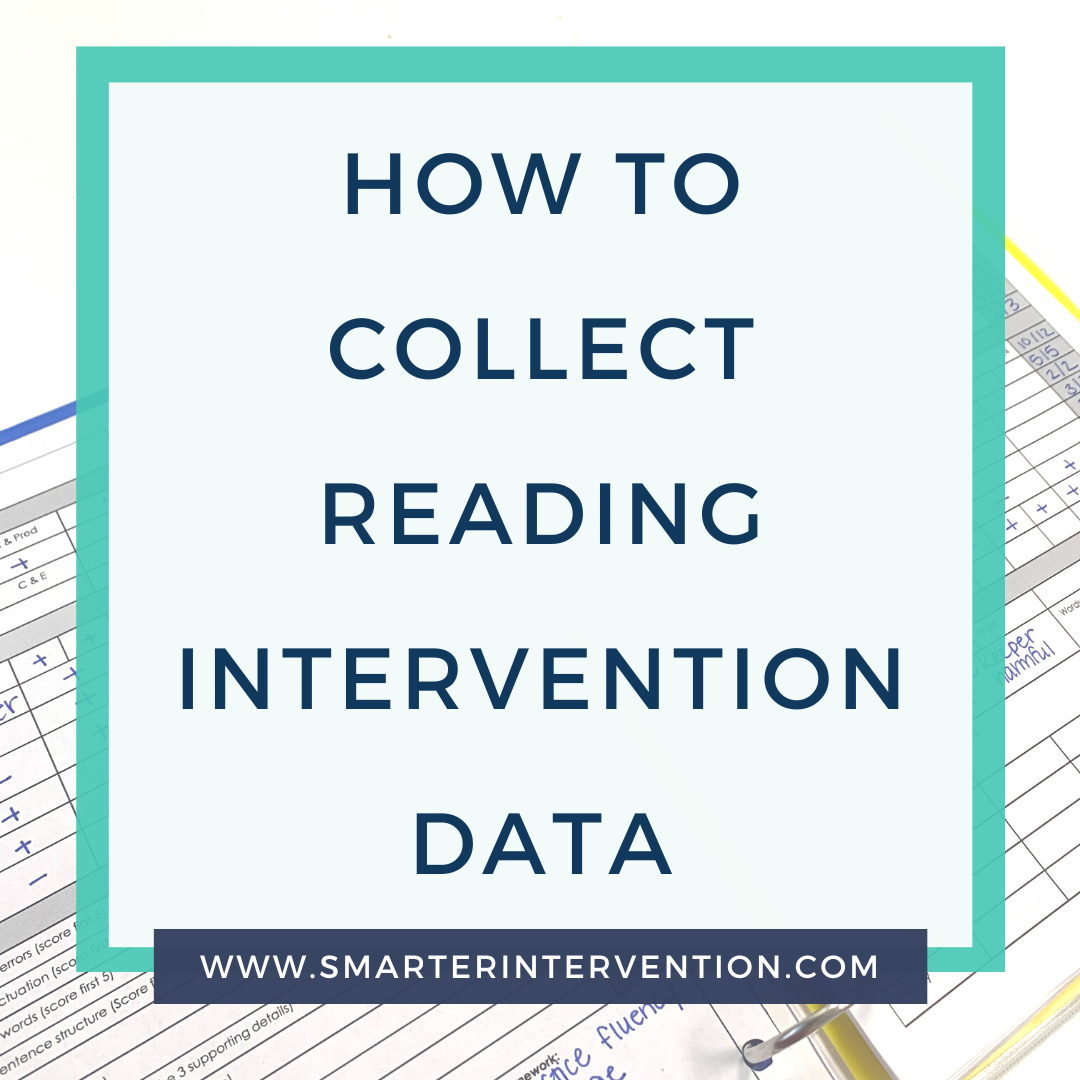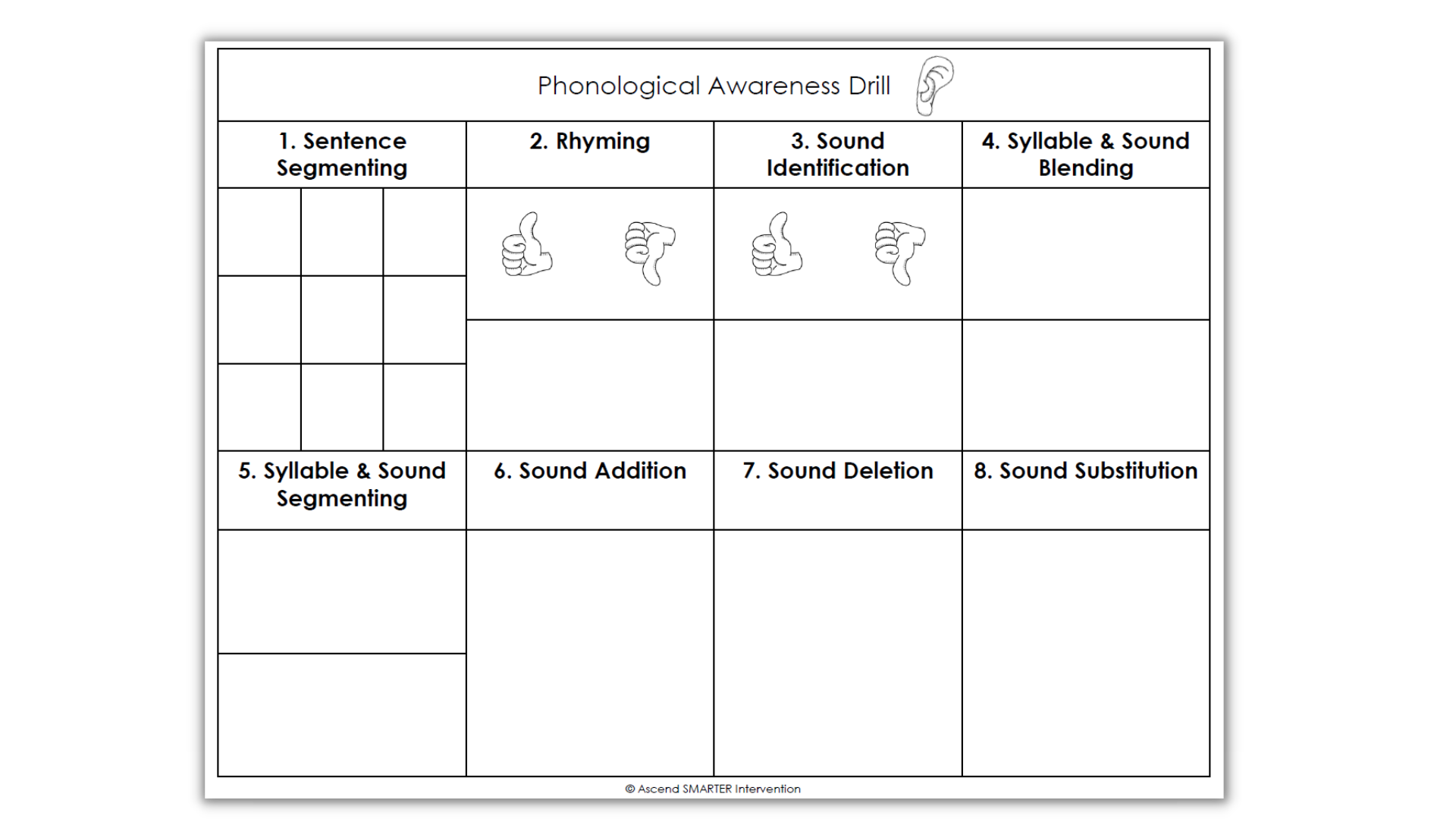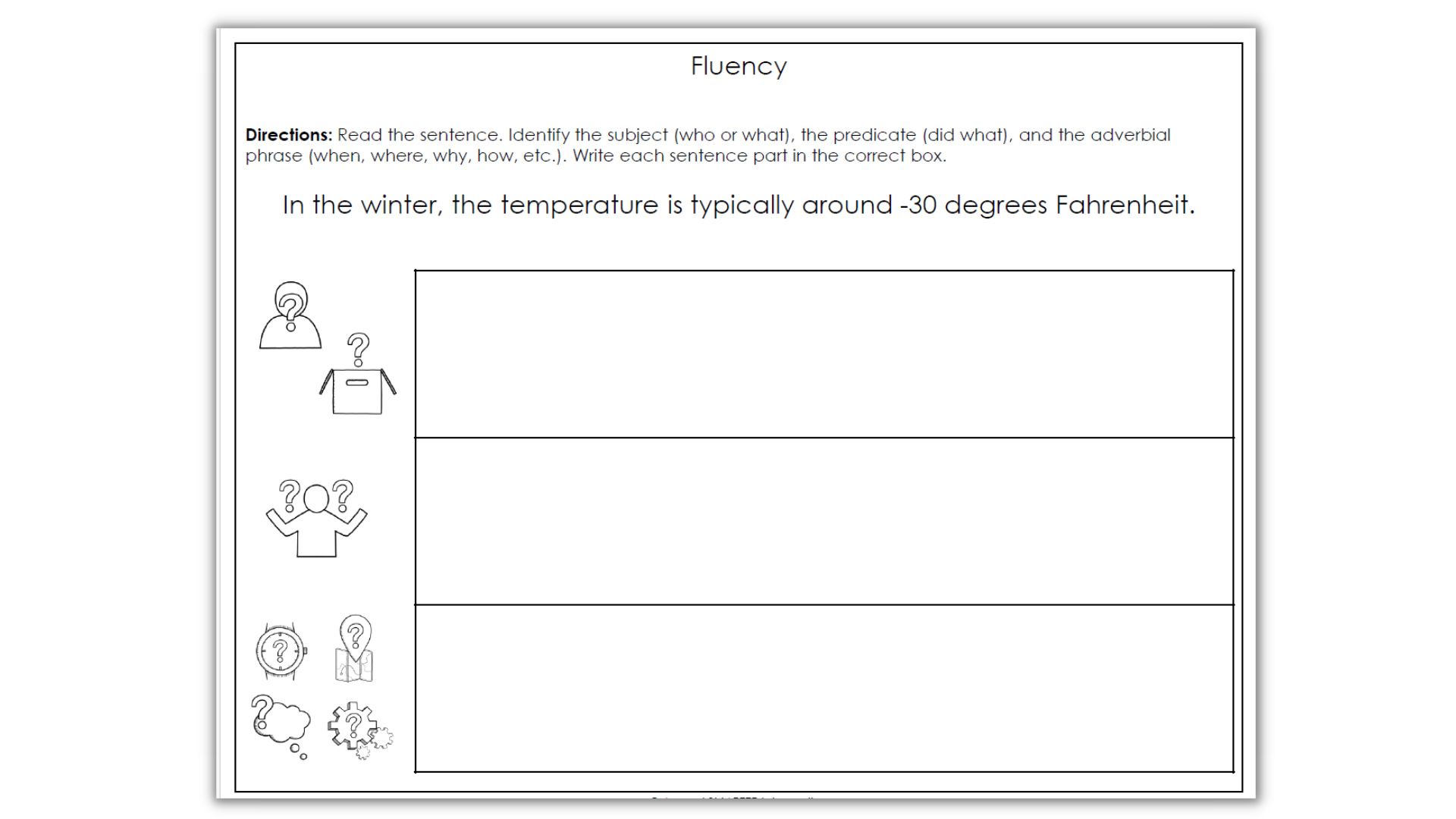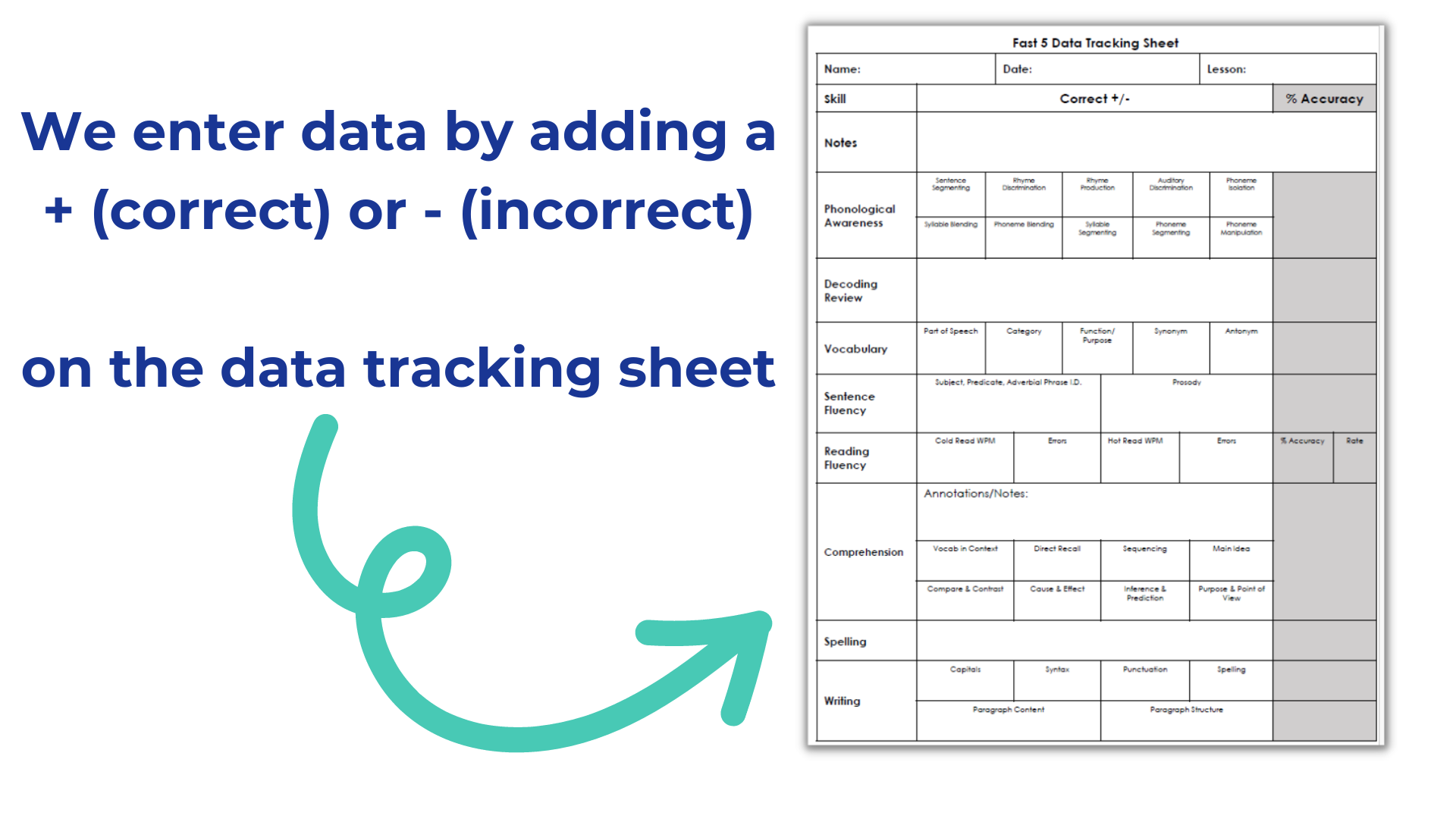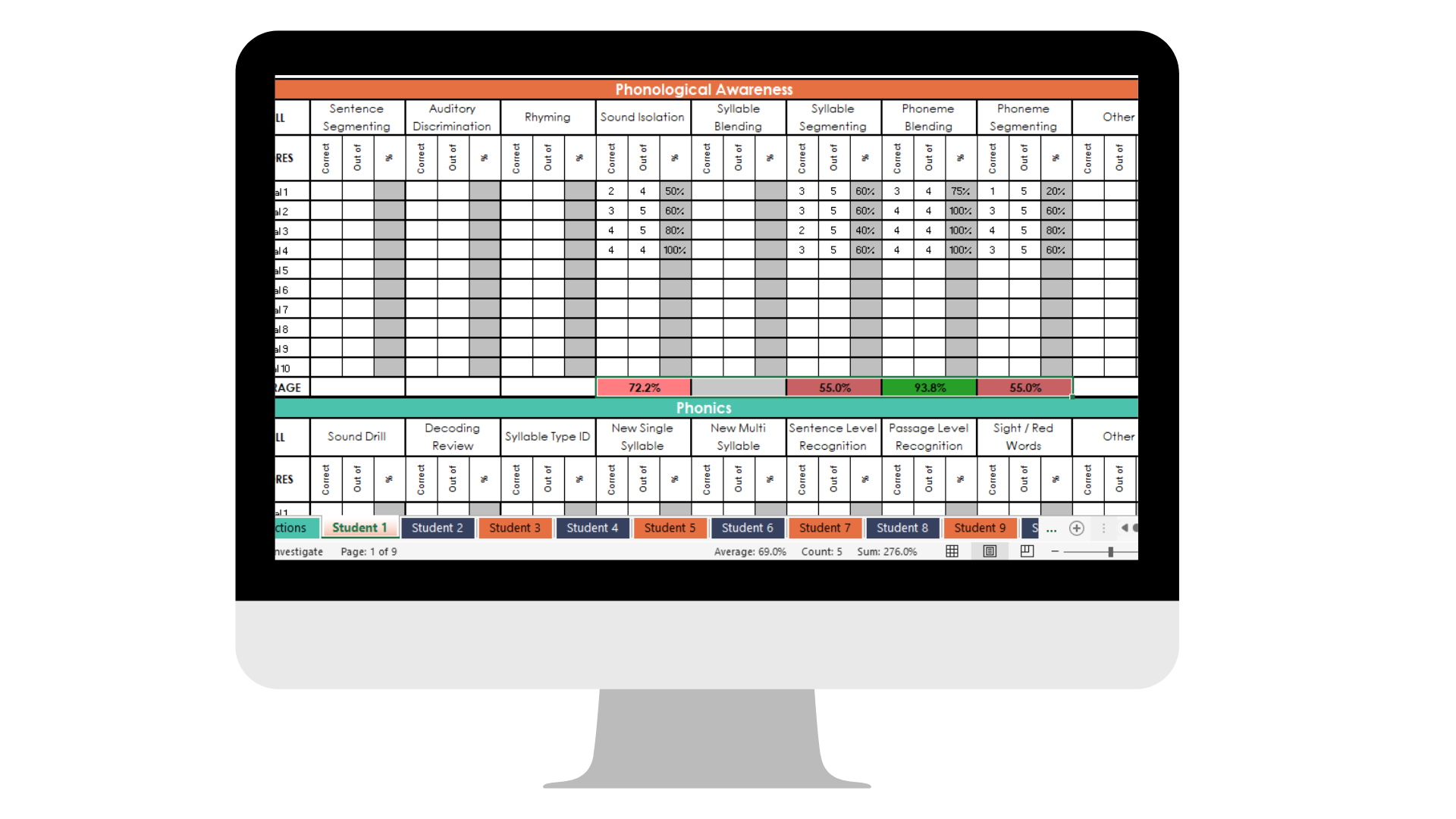How To Collect Reading Intervention Data
Have you ever struggled to collect or report on your data in a meaningful way for your reading intervention?
If so, you are not alone!
We're going to be sharing our simple strategy for collecting data across the five core components of reading and writing!
First things first - it's important to recognize that
Students struggle with reading and writing for different reasons
It's important that we are collecting data so that we know HOW to address those skill gaps.
Which skills should we be spending the most time working on?
We want to use data to drive these decisions.
We like to use what we call Fast 5 Units to get a comprehensive view of student performance across each of the core components.
In these units, we start with -
Phonological Awareness
Specifically, we like to use a 10-part Phonological Awareness drill that provides an opportunity to collect data on a student’s blending, segmenting, auditory discrimination, and phoneme manipulation ability. We mark whether the student answered correctly or incorrectly on our data tracking sheet.
When we have this data, we know where to focus our attention during that quick phonological awareness portion of our lesson that provides students the opportunity to practice manipulating sounds in words (necessary to “sound words out” for reading and spelling.
Phonics
To track a student’s phonics ability we have them complete a word reading task where we can mark whether words were read correctly or incorrectly. On our word list, we have words organized by syllable type or pattern so we can get an idea of whether any specific pattern is causing more difficulty for students. We mark how many words students answered correctly out of the total words possible on our data tracking sheet. Then, we move on to -
Vocabulary
To monitor vocabulary, we provide a few vocabulary words from a passage that students will be reading and have students define the words by identifying parts of speech, categories, functions, synonyms, and antonyms. We mark whether students can provide a correct response to each section on our data tracking sheet.
For example, insulation is a thing (category), that provides protection from the cold (function), it’s like a jacket (synonym), but it’s not clothing (antonym/shade of meaning).
Fluency
Next, we move on to fluency. We start by having students practice phrasing the sentences by identifying a subject, predicate, and adverbial phrase. We then move into passage-level fluency by measuring correct words per minute or CWPM for short, in which we set a timer for one minute and determine how many correct words the student was able to read in one minute divided by the total number of words the student was able to read in one minute. This gives us both a rate and accuracy score. For example, if the student read 53 words in one minute but made 3 errors, we would take 53 (total words) - 3 (errors) = 50 CWPM which is our rate. We can then take 50 divided by 53 to get 94% accuracy!
Comprehension
Then, we ask students comprehension questions related to the passage. The Fast 5 units allow us to get an idea of how students are doing with different types of comprehension. We look at vocabulary in context, direct recall, sequencing, main idea, compare & contrast, cause & effect, inferences & prediction, and purpose & point of view.
It’s always helpful to know not only how students are doing with comprehension, but which specific skills they need the most practice with (especially since comprehension is such a big bucket of skills!)
Writing
Finally, we move into writing where we will provide students with words to spell (we use the phonics word list), and then we have them practice sentence or paragraph-level writing which we will then score using a rubric on our data tracking sheet. We look for things like whether the student used capitals, appropriate sentence structure, punctuation, and spelling at the sentence level. At the paragraph level we look at the overall content generation, did they include an introduction, conclusion, three key details, etc.
Then what?!
We use these activities to get binary data (+ correct or - incorrect) to give us a percent accuracy score overall. These units are great because we have all the data we need to collect available from one lesson!
Once we have the information on our data tracking sheet, we enter it into our Data Tracking Spreadsheet. We are taking the data and entering it in so we can visually see where students are doing well and where they need more support over time.
You can grab our Data Tracking System for free by clicking here, or by clicking the button below!
You can also check out our YouTube video where we walk through this process step by step!

